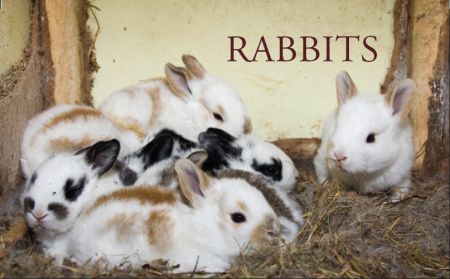
Rabbits are very social and docile animals, and easy to maintain. They like to play, but because of their skittish nature, are not necessarily the best pets for young children. Larger rabbits, bred for eating, often make good pets because of their more relaxed personalities. Rabbits are easier to raise than chickens and can provide you with beautiful fur and lean meat. In fact, rabbits will take up less space and use less money than chickens.
1. Californian: 6-10 lbs. Short fur. Relaxed personality. Choice for eating.
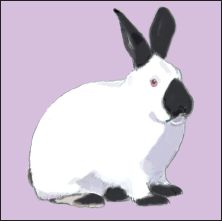
Breeds
There are over forty breeds of domestic rabbits. Below are ten of the most commonly owned varieties, along with their traits and popular uses.
2. Dutch: 3-5 lbs. Short fur. Relaxed personality. Choice pet. Good for young children.
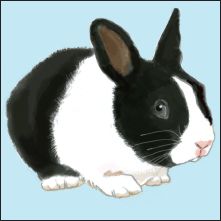
3. Flemish Giant: 9+ lbs. Medium-length fur. Calm personality. Choice for eating.
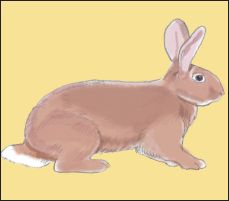
4. Holland Lop: 3-5 lbs. Medium-length fur. Curious personality. Choice pet. One of the lop-eared rabbits, its ears flop down next to its face. A similar popular breed is the American Fuzzy Lop.
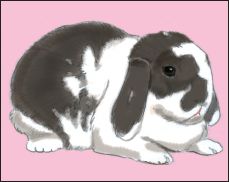
5. Jersey Wooly: 2-4 lbs. Long fur. Relaxed personality. Choice pet.
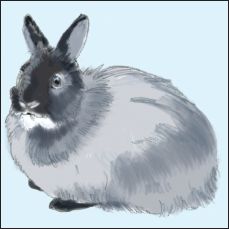
6. Mini Lop: 4-7 lbs. Medium-length fur. Relaxed personality. Choice pet. Lop-eared. Some reports of higher biting tendencies.
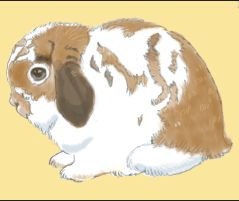
7. Mini Rex: 3-5 lbs. Very short, velvety fur. Curious personality. Choice pet. Tend to have sharp toenails.
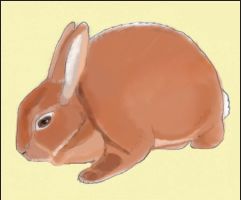
8. Netherland Dwarf: 2-4 lbs. Medium-length fur. Excitable personality. Choice pet.
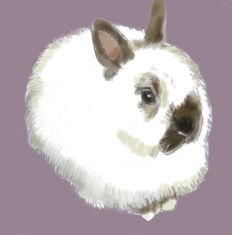
9. New Zealand: 9+ lbs. Short fur. Curious personality. Choice for eating. Variable reputation for biting.
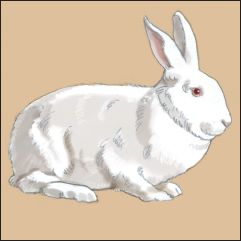
10. Satin: 9+ lbs. Medium-length fur. Relaxed personality. Fur is finer and denser than other furs.
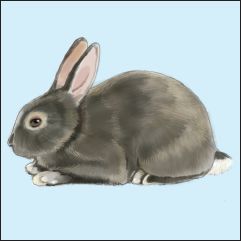
Housing
Rabbits should be kept in clean, dry, spacious homes. You will need a hutch, similar to a henhouse, to house your rabbits. It is important to provide your rabbits with lots of air. The best hutch will have a wide, over-hanging roof and is elevated about six inches off the ground. This way, your rabbits will not only have shade, but their homes will be prevented from getting damp.
Food
A rabbit’s diet should be made up of three things: a small portion pellets (provided they are high in fiber), a continual source of hay, and vegetables. Rabbits love vegetables that are dark and leafy or root vegetables. Avoid feeding them beans or rhubarb, and limit the amount of spinach they eat. If you want to give rabbits a treat, try a small piece of fruit, such as a banana or apple. Remember that all of their food needs to be fresh (pellets should not be more than six weeks old), and like all other animals, be careful not to overfeed them. Also, to keep them from dehydrating, provide them with plenty of clean water every day.
Note: If you have a pregnant doe, allow her to eat a little more than usual.
Breeding
When you want to breed rabbits, put a male and female together in the morning or evening. After they have mated, you may separate them again. A female’s gestation period is approximately a month in length, and litters range from 6-10 babies. Baby rabbits’ eyes will not open until two weeks after birth. Their mother will nurse them for a month, and for at least the first week, you must not touch any of the litter; you can alter their smell and the mother may stop feeding them. At two months, babies should be weaned from their mother, and at four months, or approximately 4.5 lbs, they are old enough to sell, eat, or continue breeding. Larger rabbit varieties may take 6 to 12 months to sexually mature.
Health Concerns
The main issues that may arise in your rabbits’ health are digestive problems and bacterial infections. Monitor your rabbit’s droppings carefully. Diarrhea in rabbits can be fatal. Some diarrhea is easy to identify, but also be on the lookout for droppings that are misshapen, softer in consistency, a lack of droppings altogether, and loud tummy growling. Diarrhea requires antibiotics from your veterinarian. In bacterial infections, your rabbit may have a runny nose or eyes, a high temperature, or a rattling or coughing respiratory noise. This also requires medical attention and an antibiotic specific to the type of infection.
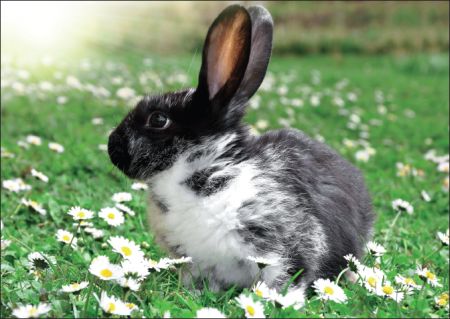
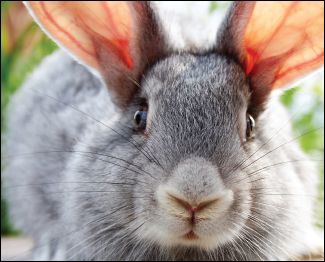
Hairballs are another issue you may encounter and also require some attention. Every three months, rabbits shed their hair, and these sheds will alter between light and heavy. Since rabbits will attempt to groom themselves as cats do, but cannot vomit hair as cats can, you must groom them additionally, to prevent too much hair ingestion. Brush and comb them when their shedding begins, and provide them with ample fresh hay and opportunity for exercise. The fiber in the hay will help the hair to pass through their digestive tracts, and the exercise will keep their metabolisms active.
If your rabbit has badly misaligned teeth, they may interfere with his or her ability to eat and will need to be trimmed by the veterinarian.
Never give your rabbit amoxicillin or use cedar or pine shavings in their hutches. Penicillin-based drugs carry high risks for rabbits, and the shavings emit a carbon that can cause respiratory or liver damage to small animals like rabbits.